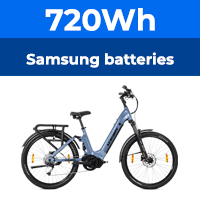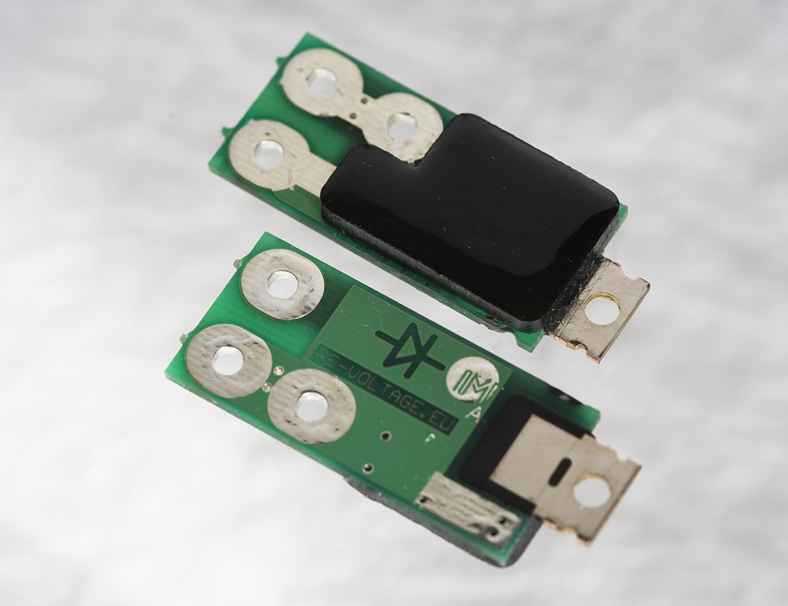I've just done some measurements to establish the current handling capability of the Ideal Diodes, and to compare them with Schottky diodes.
I did a comparison between one of the Ideal Diodes as shown in the pictures above, another one with a small heatsink glued on, a Schottky diode on a large heatsink and Schottky diode naked.
The first plot is the voltage drop with continuous current.

Now that's all in accordance with theory - as soon as the forward current is significant the Schottkies will show a drop of about 0.4 V. A normal diode will be about 0.65 V.
But here is a plot of some rough temperature measurements.

What this shows is that a heatsink is needed. Even with the ideal diodes, the thermal characteristics of the FET mean that one is needed. Incidentally, the temperature plot tells you why the naked Schottky was only tested up to 10 A.
Without a heatsink the Ideal Diode board is only useful up to 15 A. So, unless everyone tells me that 15 A is enough, I'm going to have to rework the design a bit before making a new batch.
Nick
Edited to add: The plots haven't come out as well as I hoped. They were nice quality gif's when I uploaded them, but the forum sw changed them to jpg's
I did a comparison between one of the Ideal Diodes as shown in the pictures above, another one with a small heatsink glued on, a Schottky diode on a large heatsink and Schottky diode naked.
The first plot is the voltage drop with continuous current.

Now that's all in accordance with theory - as soon as the forward current is significant the Schottkies will show a drop of about 0.4 V. A normal diode will be about 0.65 V.
But here is a plot of some rough temperature measurements.

What this shows is that a heatsink is needed. Even with the ideal diodes, the thermal characteristics of the FET mean that one is needed. Incidentally, the temperature plot tells you why the naked Schottky was only tested up to 10 A.
Without a heatsink the Ideal Diode board is only useful up to 15 A. So, unless everyone tells me that 15 A is enough, I'm going to have to rework the design a bit before making a new batch.
Nick
Edited to add: The plots haven't come out as well as I hoped. They were nice quality gif's when I uploaded them, but the forum sw changed them to jpg's
Attachments
-
15.5 KB Views: 131
-
16.2 KB Views: 130
Last edited:










